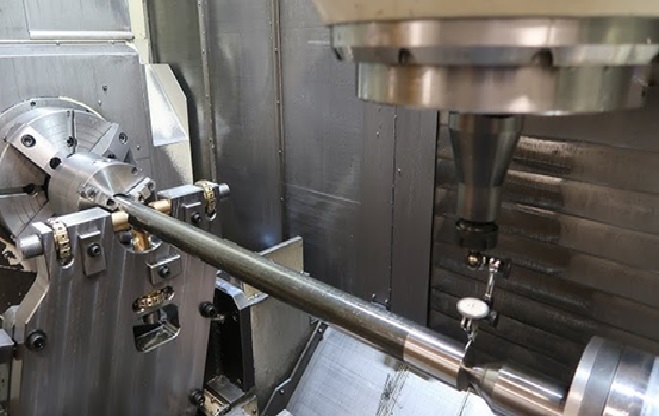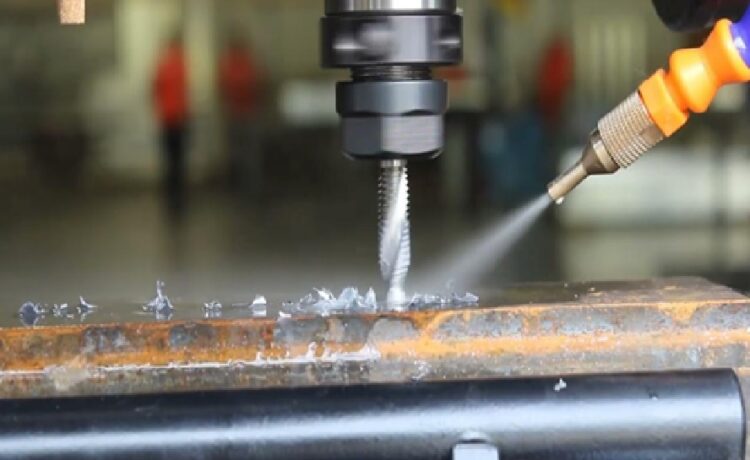Drilling is vital in industrial manufacturing, and choosing the right method impacts efficiency, accuracy, and cost. EDM, gun, dowel, and gantry drilling each offer distinct strengths and applications.
This article highlights the advantages and best use cases of these four CNC drilling methods to help you select the most suitable for your project.
EDM Drilling: Accuracy and Flexibility
Electrical sparks are used to drill material in Electrical Discharge Machining (EDM), a non-contact drilling technique. It works incredibly well for drilling hard metals and alloys that are challenging to manufacture using conventional techniques. EDM drilling excels in producing small, deep holes with precision, making it a popular choice in industries like aerospace, medical device manufacturing, and tooling.
Advantages:
- Highly precise: Capable of creating holes as small as 0.1 mm in diameter with extreme accuracy.
- Works on hard materials: Ideal for titanium, Inconel, and hardened steels.
- No mechanical force: removes the possibility of material deformation during drilling.
- Best for: Projects requiring precision in small-diameter drilling or dealing with hard materials where traditional methods may fail.
Gun Drilling: Deep Hole Drilling Specialist
Gun drilling is specifically designed for deep-hole drilling, commonly used in oil and gas, automotive, and mold-making industries. The procedure produces holes with a high length-to-diameter ratio using a long, thin cutting tool. Gun drilling ensures straight, round, and smooth holes with excellent surface finishes.

Advantages:
- Deep, precise holes: Capable of drilling holes with depth-to-diameter ratios of 300:1 or more.
- High accuracy: Produces highly accurate, straight holes over long distances.
- Excellent surface finish: Ensures minimal need for post-drilling finishing.
- Best for: Applications requiring deep, straight holes in metals, such as in the production of gun barrels, hydraulic cylinders, and medical instruments.
Dowel Drilling: Accuracy in Alignment
Dowel drilling is a method primarily used to create accurate holes for dowel pins, which are used to align parts in assembly processes. It is essential in industries like furniture manufacturing and metalworking where precise alignment of components is critical.
Advantages:
- High accuracy: Ensures perfect alignment in assembly processes.
- Speed: Dowel drilling is perfect for high-volume production since it can be completed rapidly.
- Consistency: Produces uniform holes across large batches, maintaining assembly precision.
- Best for: Projects where accurate alignment of components is required, such as in automotive, aerospace, and furniture manufacturing.
Gantry Drilling: Large-Scale Efficiency
Gantry drilling is designed for large-scale operations where multiple holes need to be drilled over a large surface area. Gantry drilling machines are often used in construction, aerospace, and heavy machinery industries for drilling large metal sheets or structures. The machines are equipped with multiple drill heads mounted on a gantry system, enabling simultaneous drilling across a wide area.
Advantages:
- High throughput: Multiple drill heads allow for simultaneous drilling, reducing overall machining time.
- Ideal for large workpieces: Suited for large-scale operations like drilling large metal sheets, plates, or structural components.
- Automation potential: Easily incorporated for increased efficiency into automated production lines.
- Best for: Large industrial projects requiring high-volume and large-area drilling, such as in shipbuilding, bridge construction, and heavy-duty component manufacturing.
Choosing the Right Method for Your Project
When deciding which drilling method to use for your industrial project, consider factors like the material being drilled, the depth and diameter of the hole, and the precision required.
- For hard-to-machine materials and small, precise holes, EDM drilling is your best option, especially in high-precision industries like aerospace and medical device manufacturing.
- For deep, straight holes with a high depth-to-diameter ratio, gun drilling is the most efficient, particularly in oil and gas or automotive manufacturing.
- For precise alignment in assemblies, dowel drilling offers the accuracy needed, making it perfect for furniture and precision metalworking.
- For large-scale industrial projects requiring high throughput and multiple simultaneous holes, gantry drilling is the go-to method, especially in construction and aerospace.







